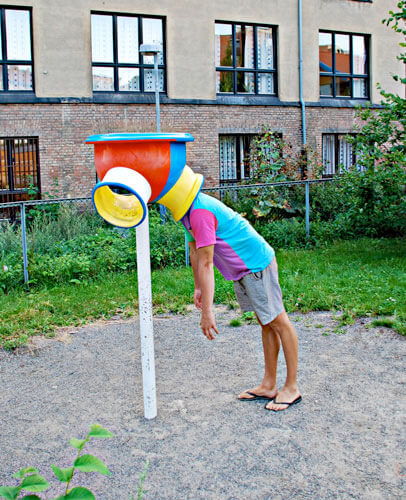Geir Tønnessen (born in 1976) is a contemporary photographer currently based in Oslo, Norway. He studied photography by himself with some guidance from friends and the Internet. Some of his works have been exhibited in the following galleries: Cyan Studio (Oslo, Norway), Galleri MAP (Oslo, Norway), and Preus Museum (Horten, Norway).
"Photography is to have fun and being smart at the same time, which for me is the perfect combination. With my creative fun shots I want to get other people to laugh and inspire them to shoot for them self. With my nature and city shots I want to create a special feeling that makes my viewers think and make them look at my shots for a long quiet time."
Interview with Geir Tønnessen
All About Photo: When did you realize you wanted to be a photographer?
Geir Tønnessen: When i very young realized i had to release my creative urges, and since i am a shitty drawer/painter, photo was my thing! And since i also like to be playful and humorous every day, i had to get it out some way!
AAP: Where did you study photography?
GT: I studied photography all by myself, spending many hour every day on the net looking at others pictures, by having a father reading art books to me since i was born, by going to a lot go art exhibitions home i Oslo and when visiting other countries and cities all over the world.
AAP: How long have you been a photographer?
GT: I got my camera when i was about five years old to my birthday from my grandmother. Something i enjoyed very much that time!
AAP: What or who inspires you?
GT: Other artists that with a lot of creativity and great new ideas. I love to find shoots by others that look like something i never have seen before.
AAP: How could you describe your style?
GT: My style is not easy to describe but i like to take creative artsy portraits, calm pictures of nature and early morning shots of cities.
AAP: What kind of gear do you use? Camera, lens, digital, film?
GT: I shoot both digital and analog. When i shoot analog, i use my Hasselblad 500cm with the standard 85mm Carl Zeiss and my Pratica LTL with a 50mm. When i shoot digital i use my Nikon d800 with Nikon NIKKOR 85mm 1:1.4G lens.
AAP: Do you spend a lot of time editing your images?
GT: I don`t use much time to edit on my computer, i like that my shots can be taken directly from the camera. So i general i just edit the shots just a little bit.
AAP: Favorite(s) photographer(s)?
GT: My favotite is Martin Parr.
AAP: What mistake should a young photographer avoid?
GT: Don`t think to much of technique! Just shoot and try to be creative and original!
AAP: If you could have taken the photographs of someone else who would it be?
GT: Martin Parr
AAP: Anything else you would like to share?
GT: Shoot first and ask for permission afterwards.
